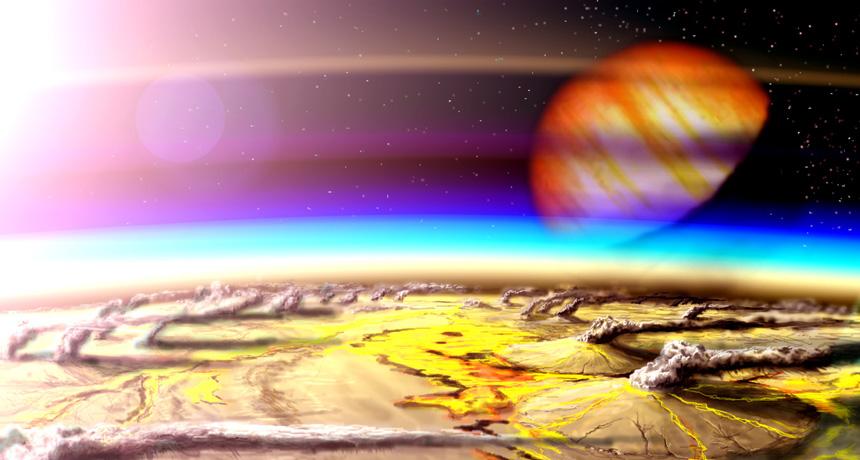Hydrogen volcanoes might boost planets’ potential for life

Volcanoes that belch hydrogen could bump up the number of potentially habitable planets in the universe.
Ramses Ramirez and Lisa Kaltenegger, both of Cornell University, modeled the atmospheres of planets blemished with hydrogen-spewing volcanoes. These gaseous eruptions could warm planets and ultimately widen a star’s habitable zone, the region where liquid water can exist on a planet’s surface, by about 30 to 60 percent, researchers report in the March 1 Astrophysical Journal Letters. That would be like extending the outer edge of the sun’s habitable zone from about 254 million kilometers — just beyond Mars’ orbit — to 359 million kilometers, or roughly to the asteroid belt between Mars and Jupiter.
Exoplanets that astronomers had previously thought too cold to support life might, in fact, be ripe for habitability if they have hydrogen volcanoes, the researchers say. One example is TRAPPIST-1h, the farthest-out planet identified in an odd system of seven Earth-sized planets 39 light-years from Earth (SN Online: 2/22/17). That world is thought to be icy like Jupiter’s moon Europa.
Adding planets to a star’s habitable zone means more exotic worlds could be targets in the search for signatures of life beyond our solar system. Astronomers plan to search for these signatures with the James Webb Space Telescope, slated to launch in 2018, and later with the European Extremely Large Telescope, scheduled to begin operations in 2024.